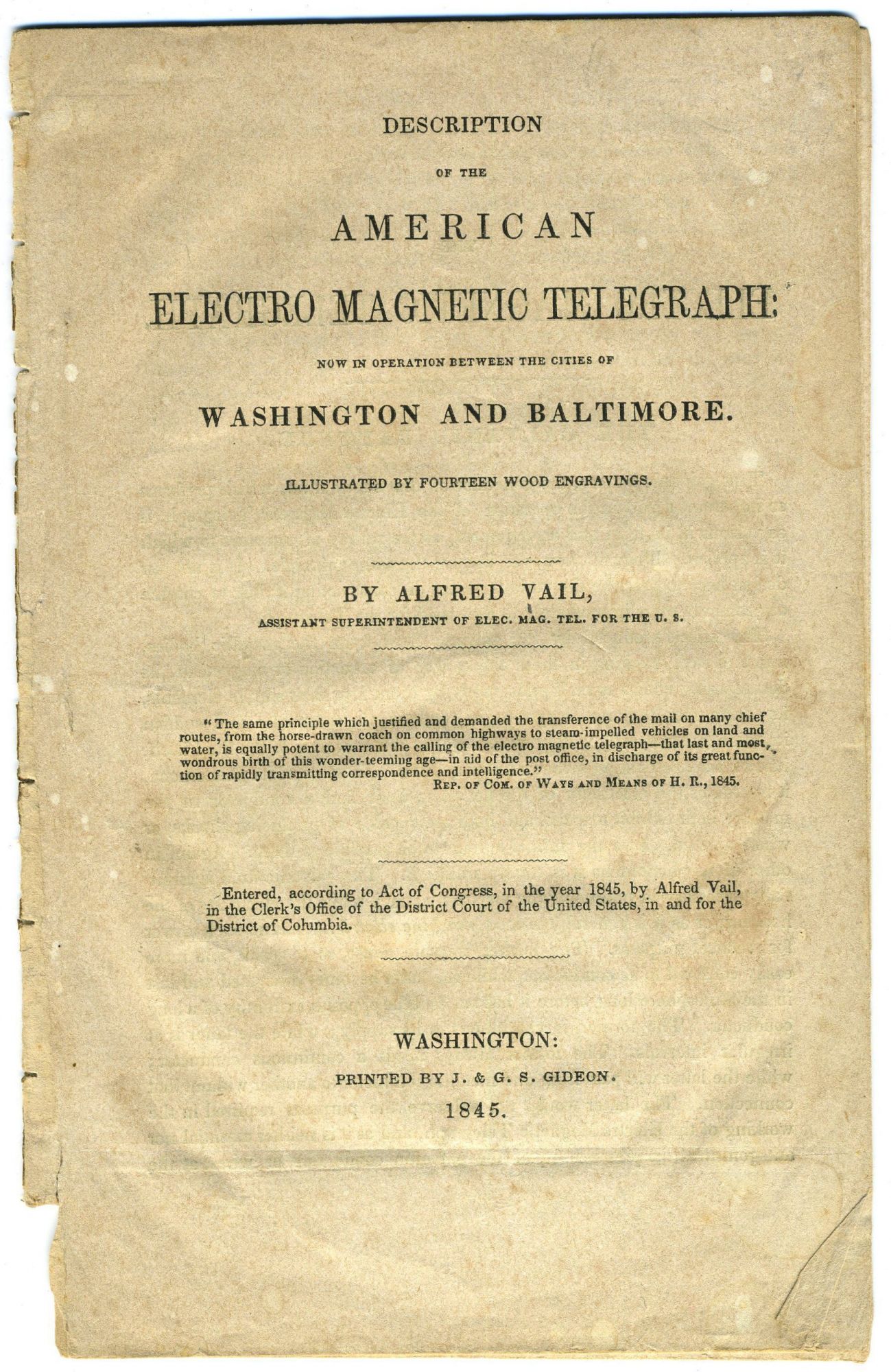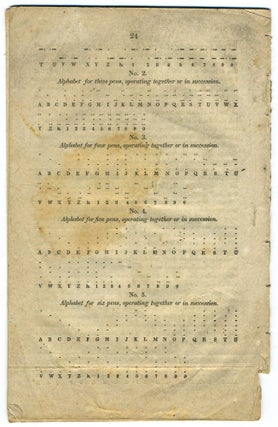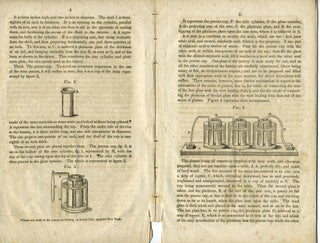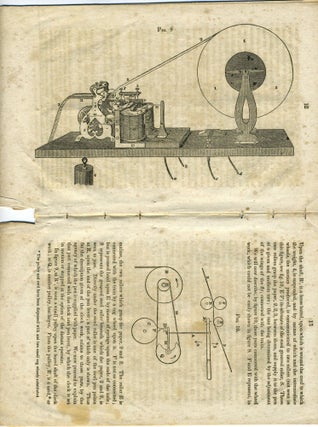Description of the American Electro Magnetic Telegraph : Now in Operation between the Cities of Washington and Baltimore. Illustrated by Fourteen Wood Engravings
Washington DC: J. & G. S. Gideon 1845. First Edition. 24 pages. 8vo. 5 1/2 x 8 3/4 inches. Self wrappers (title page is page [1]). Previously bound, with stitch marks and glue remnants at the spine edge. Minor marginal loss to the base of the spine (one inch by 1/8 inch). Some overall browning to the paper. Staining to last page. Good. Wraps. [25268]
Published in 1845 by Vail after the successful test of a Congressionally approved experimental telegraph line from Baltimore to Washington DC in response to repeated requests for information. Separately paginated and with a new title page, the content of this pamphlet is also found on pages [9]-31 of "The American Electro Magnetic Telegraph : with the Reports of Congress, and a Description of All Telegraphs Known, employing electricity or galvanism." published in Philadelphia by Lea & Blanchard in the same year.
Norman and Hooke's Origins of Cyberspace (#208), cites this pamphlet, noting that it was "probably" issued first. Both contain the same identical early printing of Morse code, one of the earliest printings of the 1844 revision of “American Morse”. With a copy of each in hand, we did a quick review for obvious typographical or printing mishaps that might provide clues to precedence. A period was added after “figure 1” in the text on page 3. There is a possible break in the woodblock for the engraving of Figure 2, at the 9pm position with two line breaks. There is also a piece of punctuation (broken?) off – the period at the base of page 16's footnote. Finally, the pamphlet has a number of examples of muddied type – places where either the printer was lazy and didn't clean the block very well (leading to excess ink obscuring small bits of the engraving and/or type) or the block or type had become damaged. This is particularly obvious on Figure 9, where the 'Y' label that should be near the '12' label is obscured with ink.
While not conclusive, these are hints that lead us to believe that the pamphlet may have been printed later, perhaps to keep costs down and remove what might have been perceived as an excess of history to those who wanted to use the code practically.
In either event, an important work, and one worthy of inclusion in any collection related to History of Communication or the Telegraph. Shiers & Sterling (6-003) ; Origins of Cyberspace #208; Wheeler 1087 (illustrated); Not in the Ronalds Collection.
Price: $1,250.00





